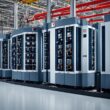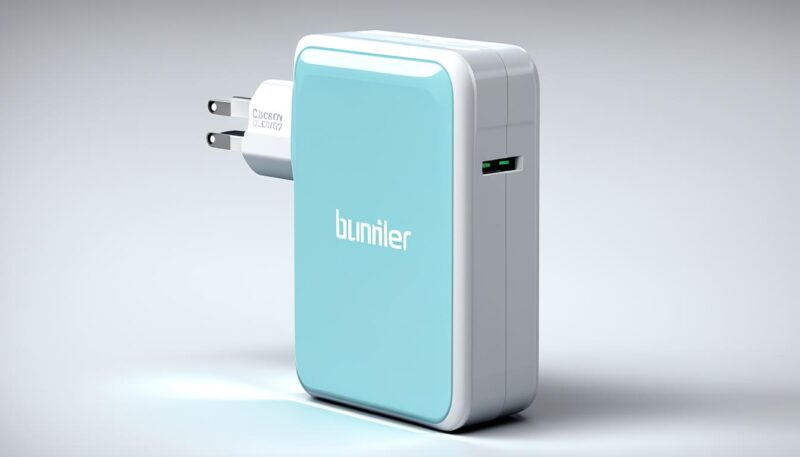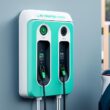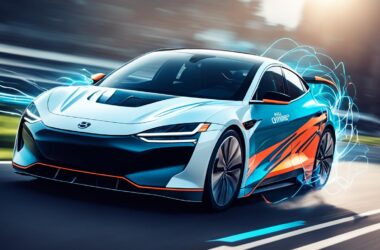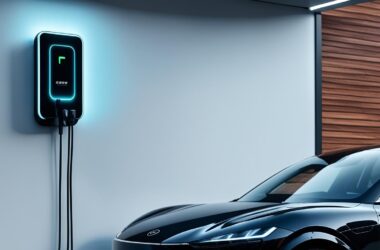I believe that a dumb trickle charger is an indispensable tool for maintaining the long-term performance health of vehicle batteries. As a vehicle owner, I understand the importance of ensuring that my battery remains in optimal condition to avoid unexpected breakdowns and costly replacements.
When it comes to vehicle battery maintenance, compatibility between the battery and the charger is key. Many engineers overlook the power requirements of portable devices and fail to recognize the need for charging under adverse conditions. By properly matching the battery and charger, I can ensure that they work together seamlessly, allowing for optimal performance and longevity.
Key Takeaways:
- A dumb trickle charger is an essential tool for maintaining the health of vehicle batteries.
- Compatibility between the battery and charger is crucial for optimal performance.
- Engineers often underestimate the power requirements of portable devices and the need for charging under adverse conditions.
- Matching the battery and charger ensures longevity and prevents unexpected breakdowns.
- Proper maintenance of the battery prolongs its overall lifespan.
Types of Chargers and Charging Methods
Chargers play a crucial role in powering our devices and maintaining the health of our batteries. They come in various types, suited for different needs and battery chemistries. Let’s explore the different categories of chargers and their charging methods.
Personal Chargers
Personal chargers are commonly included with consumer products like smartphones, tablets, and laptops. These chargers are typically low-cost and perform well when used correctly. They are designed for convenience and ease of use, allowing users to charge their devices quickly and efficiently.
Industrial Chargers
On the other hand, industrial chargers are often manufactured by third-party companies and are designed for more specialized applications. They offer additional features and capabilities, such as the ability to charge at adverse temperatures, making them suitable for industrial and commercial settings.
Smart Chargers vs. Dumb Chargers
Chargers can also be categorized as “smart” or “dumb” based on their intelligence and functionality. Smart chargers are equipped with advanced technologies that allow them to communicate with the battery they are charging. They can adjust the charging parameters based on the battery’s specific needs, optimizing the charging process and prolonging battery life. Dumb chargers, on the other hand, lack this intelligence and offer a basic, straightforward charging process.
Charging Methods for Different Battery Chemistries
Different battery chemistries have specific charging requirements. Let’s take a look at how each type of battery is typically charged:
- Nickel-based Batteries: Nickel-based batteries, such as NiCd (Nickel-Cadmium) and NiMH (Nickel-Metal Hydride), are commonly used in consumer electronics and portable devices. These batteries are typically charged using the constant current constant voltage (CCCV) method. Charging begins with a constant current to ensure the battery charges efficiently, and then transitions to a constant voltage to prevent overcharging.
- Lithium-based Batteries: Lithium-based batteries, including Lithium-ion (Li-ion) and Lithium-polymer (LiPo) batteries, are widely used in smartphones, laptops, and electric vehicles. These batteries require careful temperature monitoring during the charging process to ensure safety. Specialized chargers equipped with temperature sensors are used to maintain optimal charging conditions for these batteries.
- Lead-acid Batteries: Lead-acid batteries are commonly found in vehicles, backup power systems, and other industrial applications. These batteries require periodic full saturation charging to prevent a buildup of lead sulfate crystals, a process known as sulfation. To ensure optimal performance and longevity, lead-acid batteries should be periodically fully charged.
Understanding the charging requirements of different battery chemistries is crucial to ensuring efficient and safe charging. By using the appropriate charger and charging method, you can maximize the performance and lifespan of your batteries.
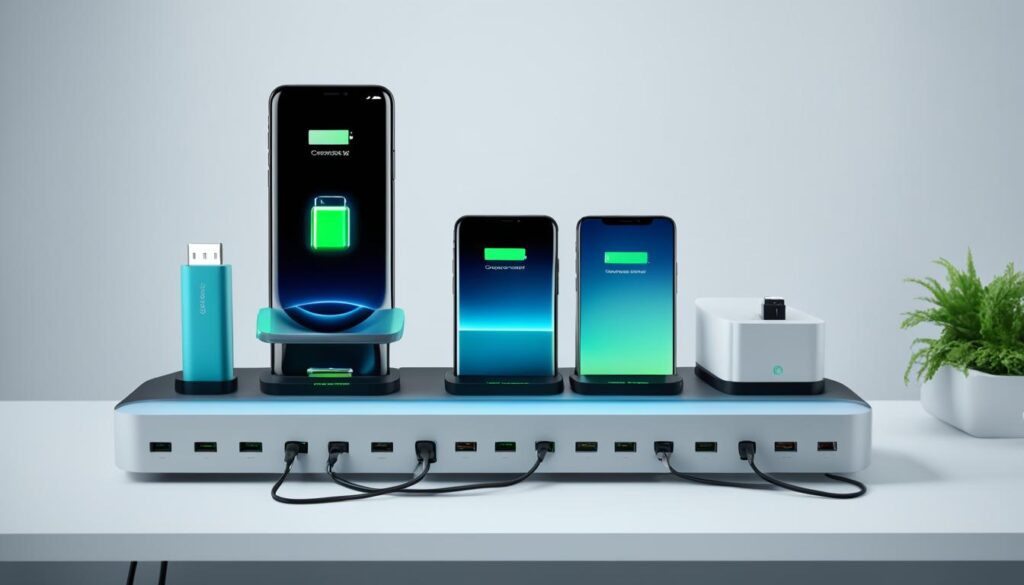
Charging Techniques for Different Battery Types
When it comes to charging batteries, different types require specific techniques to ensure optimal performance and longevity. Let’s explore the charging techniques for nickel-based batteries, lithium-ion batteries, and lead-acid batteries:
Nickel-Based Batteries:
Nickel-based batteries, including NiCd and NiMH, are commonly used in various applications. To charge these batteries, a constant current method is employed. The charger supplies a regulated current until the battery reaches its full charge capacity. To determine full charge, a technique called Delta Voltage Delta Temperature (DVDT) is used. DVDT involves observing a slight voltage drop after a steady rise, indicating that the battery is fully charged.
In addition to DVDT, chargers for nickel-based batteries should include safety features such as a plateau timer. The plateau timer terminates charging if no voltage delta is measured, preventing overcharging. Temperature sensors are also essential to monitor the battery’s temperature during charging. This helps control the charge current, preventing excessive heating and prolonging the battery’s life.
Lithium-ion Batteries:
Lithium-ion (Li-ion) batteries have gained popularity due to their high energy density and long cycle life. However, they require careful temperature control during charging. If a Li-ion battery heats up, it should not be charged, as it may lead to safety concerns.
Unlike nickel-based batteries, Li-ion batteries do not receive a trickle charge when full. Once fully charged, they can be safely stored in the charger, even for extended periods of time. This makes Li-ion chargers convenient for users who prefer to keep their batteries in the charger when not in use for a week or more.
Lead-Acid Batteries:
Lead-acid batteries are commonly used in automotive and industrial applications. These batteries cannot be fast-charged and require a full saturation charge to prevent sulfation, a phenomenon that can reduce battery capacity and lifespan. The full saturation charge ensures that the lead-acid battery’s active material is fully converted to lead sulfate.
| Charger Type | Charging Time | Key Features |
|---|---|---|
| Trickle Charger | Overnight | Applies a low constant charge to maintain battery health |
| Rapid Charger | 3-6 hours | Includes temperature sensing for safe charging |
| Fast Charger | 1 hour | Reduces charging time by using a charge rate of 1C |
| Li-ion Charger | Less than 1 hour | Charges the battery to 70% capacity quickly |
It’s important to select the appropriate charger for each battery type to ensure efficient and safe charging. By understanding the specific charging techniques for different battery types, you can prolong the lifespan and performance of your batteries.
Benefits of Different Charging Speeds
When it comes to charging your battery, different speeds offer various advantages. Let’s explore the benefits of each option:
Rapid Chargers
Rapid chargers are designed to provide shorter charge times, typically taking only 3-6 hours to charge an empty battery. These chargers include temperature sensors to ensure safe charging and prevent any potential damage to your battery. The ability to charge quickly is especially useful when you need your battery ready to go in a shorter amount of time.
Fast Chargers
For nickel-based batteries, fast chargers are an excellent choice. They can reduce the charge time to around one hour by using a charge rate of 1C. This means that the charger will provide a current equal to the battery’s capacity, allowing for a quick and efficient charge. Fast chargers are a practical option when you need to charge your batteries in a hurry.
Li-ion Chargers
If you have a lithium-ion (Li-ion) battery, a Li-ion charger is the way to go. These chargers can charge your battery to 70% capacity in less than an hour, making them incredibly fast. Additionally, Li-ion chargers do not require a long saturation charge, saving you time and effort. Perfect for those moments when you need a quick top-up before heading out.
Slow Chargers
Slow chargers, also known as overnight chargers, take their time but offer their own benefits. These chargers apply a fixed charge and take approximately 14-16 hours to fully charge an empty battery. While this may seem like a long time, slow charging allows for a gentle and thorough charge, which can help prolong the overall lifespan of your battery.
Trickle Charge and Maintenance Charge
After your battery reaches full charge, it’s important to consider trickle charging or maintenance charging. Trickle charging involves providing a small, continuous charge to the battery to maintain its optimal condition. This is especially useful for batteries that are not regularly used or stored for long periods. Maintenance charging ensures that your battery remains in good health, ensuring it’s always ready for use when you need it.
These different charging speeds offer flexibility and suit various needs. Understanding the charge time required, the communication between the charger and battery, the battery’s charge acceptance, and the benefits of trickle charge and maintenance charge allows you to make an informed choice for your battery charging needs.
| Charger Type | Charge Time | Benefits |
|---|---|---|
| Rapid Chargers | 3-6 hours | – Shorter charge time – Safe charging with temperature sensors |
| Fast Chargers | Around 1 hour | – Quick charge for nickel-based batteries – Efficient charging at 1C rate |
| Li-ion Chargers | Less than 1 hour | – Fast charging to 70% capacity – No long saturation charge required |
| Slow Chargers (Overnight Chargers) | 14-16 hours | – Gentle and thorough charge – Prolongs battery lifespan |
By choosing the appropriate charging speed for your battery, you can ensure efficient and effective charging while maintaining the battery’s overall health and longevity.
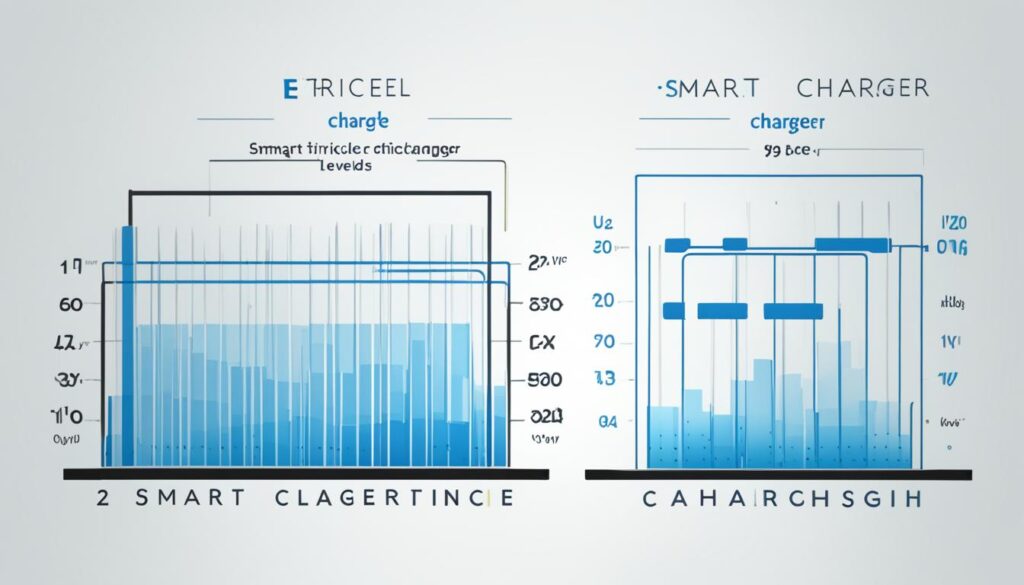
Conclusion
In conclusion, selecting the right battery charger and using the appropriate charging method is crucial for maintaining the battery performance and prolonging its lifespan. When choosing a charger, it is important to consider the battery charger selection based on the specific needs of the battery chemistry. Nickel-based batteries, such as NiCd and NiMH, require constant current charging, while lithium-based batteries need careful temperature monitoring during the charging process.
Fast chargers can offer shorter charge times, but it is essential to ensure proper charging method compatibility and communication between the charger and the battery to prevent any damage or overheating. Trickle charging or maintenance charging after a full charge can help prolong battery life by keeping the battery in optimal condition. A well-matched battery charger and battery are the key to ensuring long-term battery performance and maximizing its lifespan.
By following the right charging techniques, considering the temperature sensitivities, and utilizing a compatible charger, vehicle owners can ensure their battery’s long-term health and performance. It is important to prioritize the battery charger selection that aligns with the specific battery chemistry and to be mindful of the appropriate charging method compatibility to optimize the battery’s overall performance and promote its longevity.



